|
I have tried to explain in my blog how scientific theories arise, and how the initial theories generated in an emerging scientific field are very different from the fully developed theories of a mature scientific field. In this post I will attempt to do this again using the ancient parable of the blind men and the elephant. This is a story found in Hindu and Buddhist texts dating back more than 3,000 years. It has been used in religious and philosophical contexts to illustrate how we often think we know the truth, even though we have just grasped only part of it. The most famous version in English is the poem entitled “The Blind Men and the Elephant” written by the poet John Godfrey Saxe. So let’s imagine a physical reality which in our case has the shape of an elephant, and that we will call “the elephant”. Let’s also imagine an emerging scientific field that is trying to research said elephant. The field is represented by six scientists who seek to figure out how the elephant looks. But the scientists are in the dark as shown by the blindfolds they are wearing. So each of these scientists approaches the elephant and begins to research it. In our story this is exemplified by the scientists touching the elephant. Scientist 1 grabs the elephant by the tail and puts forward the hypothesis that the elephant is like a rope. Scientist 2 touches the elephant’s leg and puts forward the hypothesis that the elephant is like a tree. Scientist 3 touches the side of the elephant and puts forward the hypothesis that the elephant is like a wall. Scientist 4 touches the ears of the elephant and puts forward the hypothesis that the elephant is like a fan. Scientist 5 grabs the tusk of the elephant and puts forward the hypothesis that the elephant is like a spear. Scientist 6 feels the moving trunk of the elephant and puts forward the hypothesis that the elephant is like a snake. In the various versions of the parable, the blind men quarrel with each other, as each is one is convinced that their version of what the elephant looks like is the truth. The parable ends mocking their hubris at thinking that each one knows the truth when really none of them knows the whole truth (the real shape of the elephant). However, there is one fundamental difference between these versions of the parable and mine. In my version, the blind men are scientists, and that makes all the difference! These scientists are not working in isolation. They discuss and cooperate with each other. Mind you, some of these scientists may argue very forcefully in favor of their particular idea of how the elephant looks, and others may argue back just as forcefully that they are wrong. However, these scientists go to meetings, give presentations, face each other, exchange information, and publish their research results regarding the shape of the elephant in peer-reviewed journals. Each scientist tries to reproduce the observations made by others. The scientist who touched the tail and concluded that the elephant was like a rope, also touches the leg of the elephant, and realizes that he should modify his original hypothesis to incorporate this new information. Thus he proposes that the elephant looks like a tree with a rope sticking out of it. The scientist who touched the side of the elephant and concluded that the elephant was like a wall, also touches the ear, and realizes he should modify his original hypothesis to include this information. He now proposes that the elephant looks like a wall with a fan sticking out of it. The same happens with the other scientists. As new information becomes available, scientists modify their original views and try to harmonize all the knowledge about the elephant. Mind you, this can be a messy process that may be hampered by methodological difficulties. For example, some scientists may not reach high enough to touch the ear, or may not be nimble enough to catch the tail and they remain unconvinced of claims that the elephant is like a fan or a rope. Nevertheless, after a period of time, a majority of these scientists come to an agreement and put out the first theory regarding how the elephant looks! 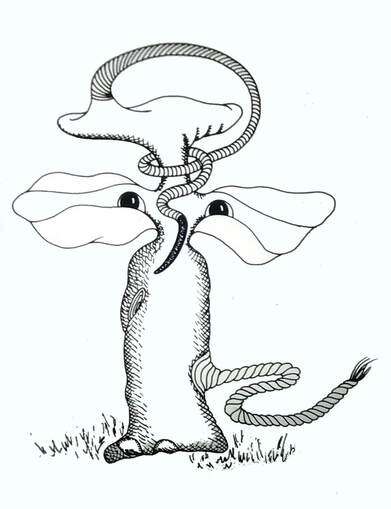 The First Theory The First Theory As you can see from the image, this theory about how the elephant looks is a very preliminary one. However, there is something “elephant-like” about it. Clearly the theory has grasped some aspects of the reality the scientists were studying. In its present form the theory may even have some usefulness, but the theory is clearly incomplete. It does not reflect the full reality of how the elephant looks. Nevertheless, this theory represents a group effort. The scientists are trying to fit all the relevant information that is available to come up with the answers. So the research continues. A scientist may find that the elephant has not one leg but four. The scientist reasons, “Hmm, the elephant is like four trees? That doesn’t make sense.” Another may find that the surface of the wall is much larger and is connected to the four legs at the bottom and completely surrounds the elephant at the middle. He may think, “What type of wall is this? The elephant may not be like a wall after all.” As more observations keep piling in, the original theory is found to be unsatisfactory and is replaced by one that incorporates the new observations. This new theory is more complete and its image would look more like an elephant. Scientists develop new methods to investigate the shape of the elephant generating more information. Scientists from other disciplines may also take up the research of how the elephant looks bringing in their expertise and new ideas. As this process keeps going and the scientific field that studies the elephant reaches maturity, a theory is put forward that explains the majority of the observations regarding how the elephant looks. The theory is used to make predictions that turn out to be true and generates practical applications. The scientists stop arguing with each other regarding the most relevant aspects of what the elephant looks like, and they reach a consensus. Thus something has happened that has never happened in any of the previous versions of the parable. The scientists studying the elephant don’t have their blindfolds on anymore. They are able to behold the true shape of the elephant. By working together, exchanging information, trying to reproduce what others did, and trying to come up with explanations for all the observations, they have discovered the truth! That is how science works. The images by Paula Bensadoun can only be used by permission from the author.
1 Comment
With this post I celebrate 100 posts in my blog! Back in 2017, I decided I was going to blog about science. I am trained in the ways of science. I can read, understand, and correctly interpret most scientific information, and if I don’t understand it right away, I know where to find material that will help me understand it. Therefore, I could sit and wait for the next interesting scientific article, read it, figure out how to explain it to laypeople, and then blog about it. It is not my intention to belittle this approach. I think it is important to present science to people in a way they can understand it, but the thing is everyone is doing that, and I had other concerns. As a young man, I was fascinated by science because, unlike other ways of discovering the truth about the behavior of matter and energy in our universe, science actually worked. Not only that, but science is a methodology that can unite people of difference countries, races, ethnicities, and social, political, philosophical, and religious persuasions, making it possible for all to agree on the truthfulness of certain pronouncements about reality. But early on in my career I was even more fascinated by the misconceptions that people harbor about science and the natural world. I met people who would talk to me about clairvoyance, telepathy, demonic possession, or ghosts as if these things were true (they aren’t). I met people engaged in the practice of astrology, homeopathy, and faith healing that would tell me that these things worked and had been validated by science (they don’t and they haven’t). So while pursuing my science career, I formed a skeptics group and wrote columns for local newspapers where I tried to educate people about what is and isn’t science, how does science work, what are the limits of science, what masquerades as science, and why they should care. This went on for a few years, but these activities fell by the wayside as life and the demands of work and family intervened. Now fast forward a few decades and once again I felt the urge to engage in these activities again. However, things had changed a bit. The internet has made scientific information, which takes professionals years of training to understand and evaluate, freely available. Anyone can now pick and choose studies or ideas from the scientific literature regardless of their validity, and interpret them as they please to support their views. This has generated disinformation and the so-called “alternative facts.” Additionally, we have seen a resurgence of anti-science like never before. There are individuals, groups, and powerful interests that know that science can prove them wrong, and they fear science because they know science works. Therefore, these entities take it upon themselves to delegitimize science. We have seen the rise of the climate change denial movement, the anti-vaccination movement, various conspiracy theories, along with the latest incarnation of the creationist movement (intelligent design) and even flat Earthers. And many individuals within these movements argue that scientists are dishonest, have sold out to powerful interests, and therefore are not to be trusted. Because of the above, it is important for scientists to get involved in educating the public about the facts, and to fight back against the delegitimization of science and scientists in order to set the record straight. So to do my share, I started this blog and decided that it would cover several recurrent themes.  St. Augustine carving on a wooden door of the St. Vitus Cathedral in Prague, Czech Republic St. Augustine carving on a wooden door of the St. Vitus Cathedral in Prague, Czech Republic One of the most important themes that I often bring up in my discussions of creationism and evolution or religion and science, is the need for science to temper beliefs, the need for beliefs in shaping the morals and ethics of scientists, and the need to keep these two areas separate from each other as per the concept of non-overlapping magisteria (to which I subscribe) proposed by the late Harvard paleontologist Stephen Jay Gould. This distinction led me to call my blog “Ratio Scientiae”. In the theology of the Christian philosopher, Saint Augustine, he identified two different but complementary types of reasoning, ratio sapientiae, and ratio scientiae. Ratio sapientiae dealt with knowledge of the divinity, whereas ratio scientiae dealt with knowledge of the physical world. Saint Augustine believed that the physical world displayed certain patterns and regularities that we could discover employing ratio scientiae, and I thought this described very well what would be the philosophy behind my blog. Other examples of recurrent themes in my blog are: 1) The need to understand how the scientific method works, what scientific theories are, and how the process of science can generate facts as opposed to notions that are tentative and ephemeral. 2) The need to respect scientists and their expertise while recognizing that they are human and make mistakes, but at the same time understanding that the fact that science can be wrong is its strength and the main reason why it can be right. 3) The need for skepticism to avoid having your mind so open that people will fill it with trash, but at the same time the need to be able to give up irrational forms of skepticism and accept the evidence to avoid, for example, falling in the trap of accepting conspiracy theories. 4) The need for science to not work in a vacuum, and accept that our reality is also shaped by beliefs that must be taken into account as part of the solutions to our problems. At the same time I did not want my blog to be one cryptic boring long hard to read deal. This is why I also often post fun and interesting things both in my blog, and in the “Interesting Stuff” section. According to my metrics, my blog receives about 600 unique visitors per month, each of whom reads an average of 2.5 pages. If you have been one of those, I want to thank you, and hope that what I have written has helped your thinking about some aspect of science and its method or at least entertained you enough for you to think that science is cool and worth your while. Thank you very much! Rolando Garcia This blog is supposed to be a science blog, so I try to keep it non-political. Science is the best method we have to discover the truth about the behavior of matter and energy in the world around us. Furthermore, science makes it possible for human beings of very different religious, philosophical, and social persuasions to come to an agreement on issues pertaining to the natural world. In order to keep this capacity, science should not intrude into those areas that are not of its competence such as values, morals, ethics, religion, political views, etc. However, this is a two-way street. Politics, religion, and other disciplines of human thought should not intrude into the scientific realm and thwart the scientific quest for truth. So what are scientists to do when this happens? Hurricane forecasting is a difficult scientific discipline. There are many variables involved in predicting the path of hurricanes, and many of these variables are not yet known or even understood well enough to make long-term predictions. These limitations are well known and are woven into our current hurricane forecasting system. Citizens are always informed of the likelihood that a hurricane will affect certain areas and to what extent to the best of the abilities of the scientists and the effectiveness of the technology at their disposal. However, it is imperative to understand that the prediction of the path of a hurricane can sometimes change from one day to another. Political personalities or celebrities that are followed closely by millions of people can play an important potential role in the preparedness against an impending hurricane. These individuals can raise awareness quickly about the need for people to protect themselves and what they have to do. However, for this potential to be realized there needs to be close cooperation with weather scientists as well as reliance on the most up to date forecasts. This brings us to hurricane Dorian and President Trump’s tweet. The facts of this SNAFU are well known and you can read about them in several media outlets, so I will just gloss over the most salient aspects. On September 1 close to 11 AM Mr. Trump, tweeted that the state of Alabama would be among the states most “likely hit (much) harder than anticipated” by hurricane Dorian. It seems that Mr. Trump was basing his tweet on dated information from 5 PM on August 30 that included the possibility that within 5 days large areas of Alabama would have a 5-30% chance of experiencing sustained winds of 34 knots (39 mph), and the southeastern corner of the state would have a 5-10% possibility of receiving winds of 50 knots (58 mph). According to the Beaufort Wind Scale, a wind speed of 34 knots is the wind speed that will break twigs and small branches from trees and make walking difficult, whereas a wind speed of 50 knots can break or uproot trees and cause considerable building damage. However, by the time of Trump’s tweet, the predicted path of the hurricane had moved eastward and now only the southeastern corner of Alabama stood a 5-10% chance of experiencing sustained winds of 34 knots within 5 days. The inclusion of Alabama in Trump’s tweet and the language he used alarmed many people who read it or heard about it, and they started frantically calling the office of the National Oceanic and Atmospheric Administration (NOAA) in Birmingham, Alabama, which issued a tweet contradicting the president’s assertion. Over the course of the next few days, Mr. Trump defended his tweet with several pieces of evidence. One was an actual NOAA weather map that had been altered with a line drawn over Alabama. Another was one of the so called “spaghetti plots” that displayed a few potential hurricane tracks over Alabama. However, these devices are not weather forecasts. They are very preliminary and inaccurate plots that scientists use to make the cone plots of probability for forecasting the hurricane’s path. It seems that Mr. Trump did not know this. The most serious thing that happened was that NOAA’s management sent an agency-wide communication to all its weather service personnel telling them to “only stick with official National Hurricane Center forecasts if questions arise from some national level social media posts which hit the news this afternoon” and not to “provide any opinion.” This was widely interpreted by both present and former employees of NOAA as pressure from the higher ups not to contradict the president and received widespread condemnation. At the time of writing this blog, the latest reporting on the matter indicates that the president himself directed his staff to pressure NOAA’s management to disavow the Birmingham office, which the president denies. (Update) I want to state the following regarding this issue. Both the president and NOAA have the duty to serve the American people to the best of their abilities. This means that: 1) If the president is going to issue a communication regarding a potentially shifting weather phenomenon like a hurricane, he has the obligation of basing it on the most up to date information. For this, the president has to request to be briefed accurately and also educate himself on the subject. There is nothing shameful in this. A person can’t know everything. Additionally, it also means that the president should quickly admit mistakes and vow to ensure that they don’t happen again, as opposed to doctoring weather maps or producing dated or deficient maps to defend his claims. Admitting a mistake and taking efficient corrective actions is not a sign of weakness. We are all humans. We all make mistakes. People understand this and can relate to it. and 2) NOAA has a duty to not only provide education to the president, but also to coordinate with him to avoid confusion, recrimination, and loss of confidence in the agency. However, what the higher ups at NOAA did, which was essentially chastise their scientists for providing the most up-to-date information to the people of Alabama, is unacceptable. When the president of the United States speaks, or in this case, tweets, his words can have far-reaching consequences. The Birmingham office should be commended for their quick action in defusing a tense situation created due to a presidential communication based on deficient information. A modern society cannot face challenges effectively when the message delivered by science is nullified by political considerations. This is especially true when the well-being of human beings is at stake, as is the case with the possible path and impact of hurricanes, and is made more relevant today by the fact that global warming is contributing to the strengthening of hurricanes. Unfortunately, not only is Mr. Trump skeptical of climate change reports put together by his own scientists, but his administration has also been actively opposing the efforts by scientists to educate society to address this issue. The pursuit of the scientific truth is something to be cherished and promoted, not something to be met with reprimands, disavowal, disbelief, or ignored altogether. The Dorian Forecast Graphics by NOAA are in the public domain. “Seek and you shall find.” Many people are familiar with this saying. It is one of those phrases that have permeated our culture. But where does it come from? This phrase comes from the Bible. It is part of the teachings of Jesus contained in the so-called “Sermon of the Mount” and detailed in the Gospel of Mathew. The specific reference is Matthew 7 (King James Version of the Bible): “Ask, and it shall be given you; seek, and ye shall find; knock, and it shall be opened unto you.” This statement in religious circles is normally associated with a search for a spiritual type of truth, the one that usually falls outside the scope of science blogs. However, this statement in our society has been generalized and applied to any activity that involves a search for something. It is as if we take it as a given that the mere activity of searching will lead to the discovery of that which we are searching for. The problem is: what if we search for something that isn’t there? What if there is nothing to find? What happens then? Searching for something that we want to find when there is nothing to find can quickly degenerate into the equivalent of finding shapes in the clouds. This is all too obvious, for example, to police departments that want to involve the public in supplying tips on a high profile case. They know that the majority of the information they are going to receive will be false positives, and they are going to need a lot of personnel and resources to chase down leads the vast majority of which will turn out to be false. This phenomenon is seen in all human beings including scientists. I have mentioned before in my blog the cases of the astronomer Percival Lowell who claimed to have observed canals on Mars, which he interpreted to be evidence of an advanced civilization, and of the scientist Rene Blondlot who thought he had discovered a new form of radiation. Invariably, when we are searching for something that is not there, and we want to find it, we will tend to find it one way or another. Because of this, scientists regularly use special experimental designs in those studies that rely to a great extent on the evaluation of the results by a human observer to avoid making this mistake.  As many studies have shown, our perception of reality can be strongly influenced by our expectations. But these expectations are not limited to something we are looking for. In fact, the very way we process the information we receive minute by minute in everyday life, even when we are not consciously searching for something, is influenced by our expectations. Our perception of reality is not passive. We subject the process of making sense of the inputs that are relayed to our brain by our senses to many filters, and some of these filters are made up of complex social and psychological premises that are a product of the interaction between our experience, our environment, and our genes. For example, new evidence that shows, yet again, that the Earth’s climate is warming, or that vaccines are safe, or that evolution is true, will be perceived differently by a regular person as opposed to a climate change denier, a person opposed to vaccination, or a creationist, respectively. But why does our brain function based on a system where expectations can hinder the correct appraisal of reality? The answer is that we do this to make sense of the world around us. Once we have decided that our environment operates based on a certain set of rules that give rise to certain patterns, we will seek and find these patterns in the information we receive from our senses, and discard or ignore the rest. This approach is actually useful. It serves as a way to reduce the seemingly vast complexity of the world that surrounds us to a simple set of premises that will generate certainties on which we can base our actions. The downside of this approach, of course, is that we tend to blind ourselves to the perception of things that do not fit our expectations, and the flip side is that we see things where there is nothing to see. This is why conspiracy theorists keep on finding evidence of conspiracies even when no such evidence exists. So the saying “seek and you shall find” should probably be amended to: “Seek and you shall find, and if there is nothing to find, you shall make it up!” Such is the complexity of the human mind. Perception image by Geralt from Pixabay is free for commercial use. |
Details
Categories
All
Archives
June 2024
|
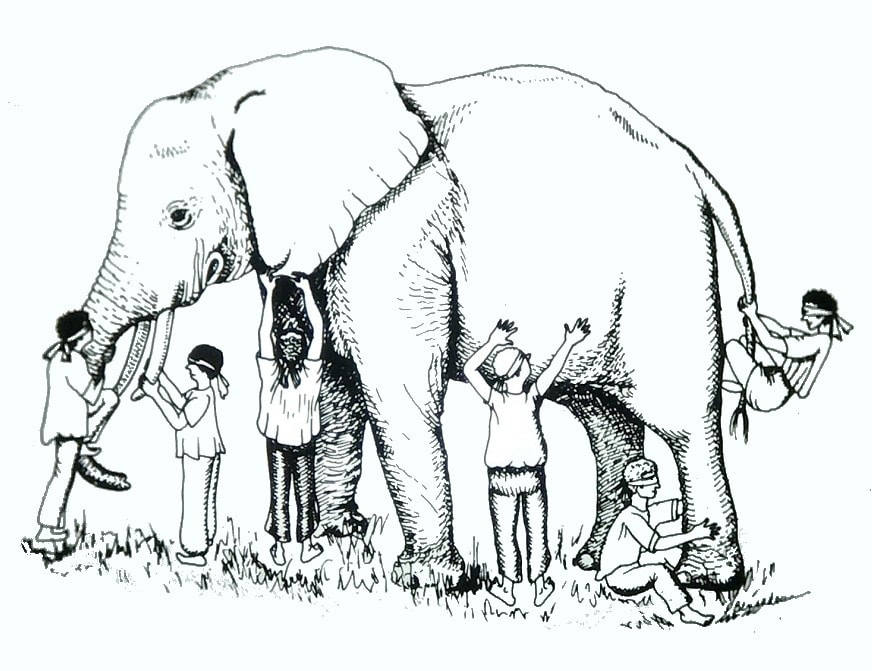
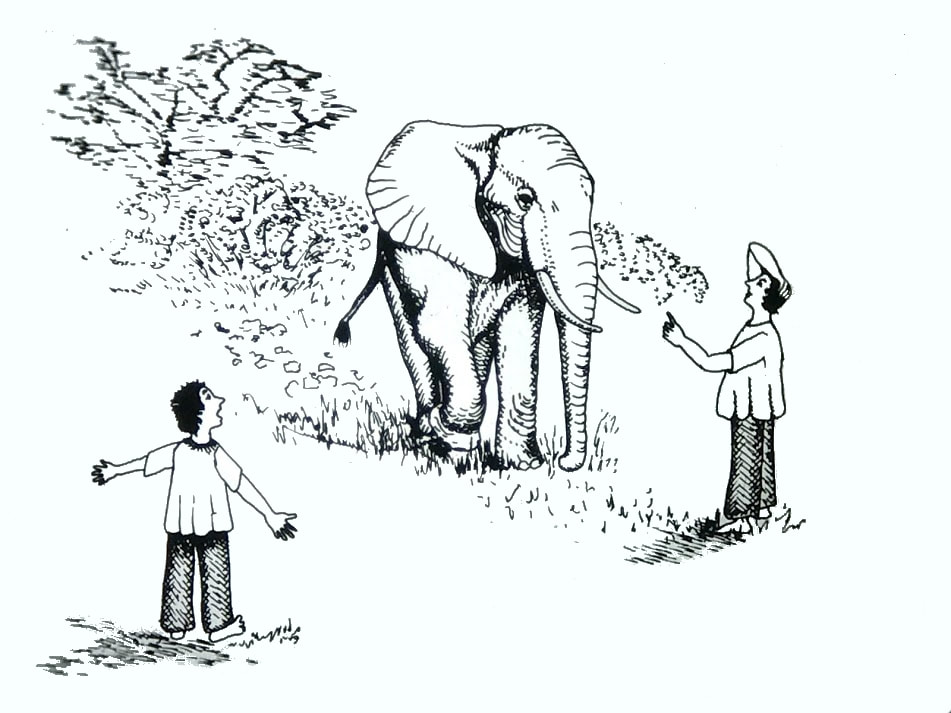
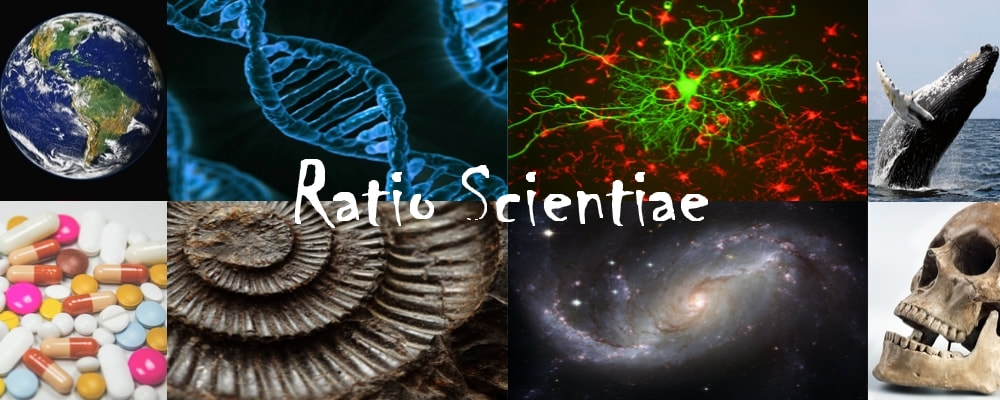
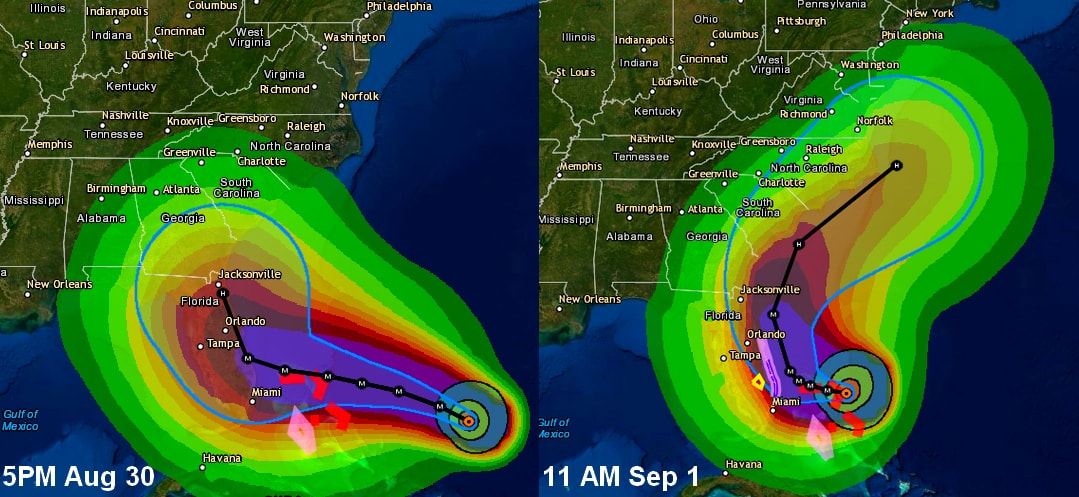
 RSS Feed
RSS Feed